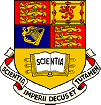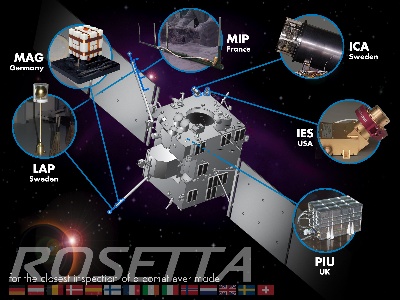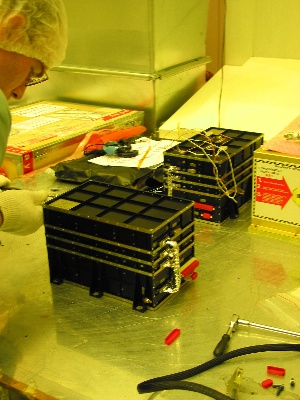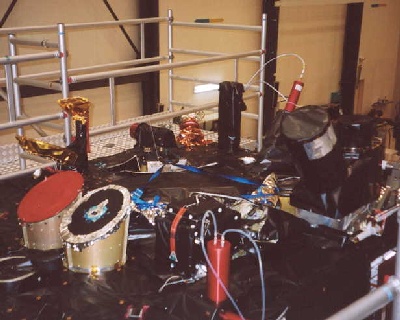
 |
|
News Page |

January 2003 |
This month's news stories:Rosetta News |
 We’ve got 1,2,3,4,5 Sensors working over time....
We’ve got 1,2,3,4,5 Sensors working over time....Yep, the Imperial College Team working on the Rosetta Mission have made such a significant contribution to Rosetta Plasma Consortium (RPC) that the other five RPC Principal Investigators recommended to ESA that we should be upgraded from a mere Co-Investigator status to a full Principal Investigator status. Senior management of ESA’s Science Directorate made no hesitation to grant them their wishes in the knowledge that the Imperial College team was fundamental in the successful delivery of the RPC package.
On a scientific satellite there is normally a single Principal Investigator per scientific instrument carried by the spacecraft. The PI is usually a scientist who takes the lead in persuading ESA or NASA that the instrument should be part of the scientific package on a mission. Once the instrument has been accepted as part of the payload the PI and the institution that he/she belongs takes overall responsibility for that instrument. Of course a is very difficult for a single institution to build a complete instrument on its own, so it is common that collaborations are made with other institutions who each are represented by a nominated Co-Investigator. For example, the magnetometer instrument FGM on Cluster, the PI is our own Professor Andre Balogh and we responsible for the whole instrument whilst Technical University of Braunschweig, University of Graz and Goddard Space Flight Center all supplied significant hardware contributions to FGM and they are our Co Investigators.
 |
Main and spare RPC units during integration at ESTEC. |
Rosetta is one of ESA’s cornerstone mission which is to be launched very soon to rendez–vous with the comet Wirtanen and make an in-depth study of the comet and its surrounding environment.
The Rosetta Plasma Consortium Package can be considered as 5 “senses” connected to a central “brain”. Each “sense” is a sub-instrument which measures a particular aspect of the comet’s plasma environment. The central “brain” talks to each sub-instrument exchanging commands and information with each. It is also responsible for communicating with the Rosetta Spacecraft and thus the outside world. The Imperial College team is responsible for building the central “brain” which is know as the PIU or the Plasma Interface Unit.
The promotion from Co-Investigator status institution will mean that PIU will now join the IES, ICA, LAP, MIP and MAG as Principal Investigators of the Rosetta Plasma Consortium.
During the last few years the Imperial College team has not only designed, built and tested the PIU but also has taken the huge responsibility of managing the consortium throughout the integration, operation and testing of the whole consortium package. This has involved many hours of hard work and a punishing schedule of tests that has seen us travel from the Artic Circle to South America. On numerous occasions anomalies during testing have required resourcefulness and clear thinking under pressure to secure a successful outcome.
 |
IES & ICA on top of Rosetta Spaceraft in French Guyana. |
The Imperial College Team consists of Chris Carr (who becomes the PI), Chris Lee, Michael Ludlam, Trevor Beek and formerly Paul Howarth. Our involvement has only been possible with the support from the Professor Andre Balogh who secured our position on the Rosetta Mission.
Chris Lee 10th January 2003
View October's news, older news or return to Space and Atmospheric Physics home page